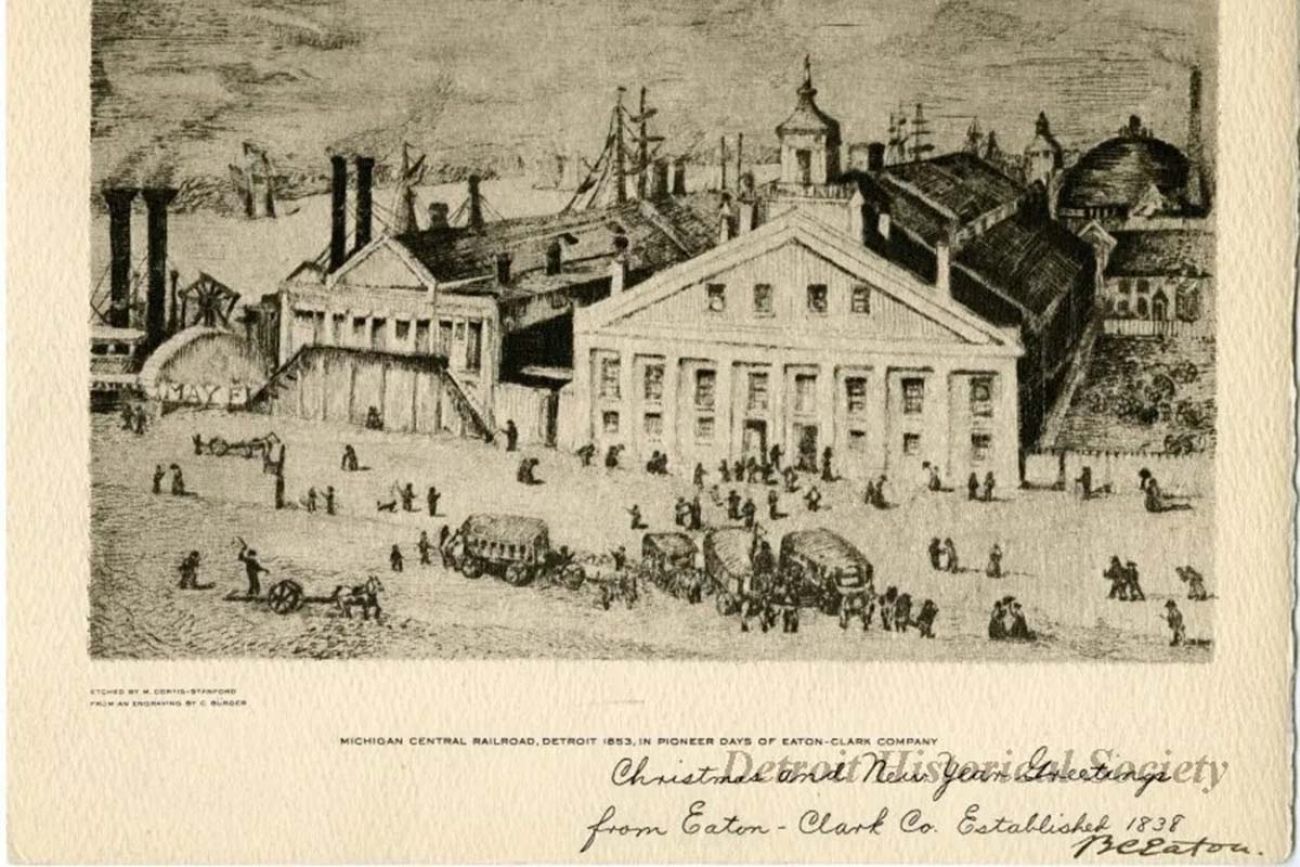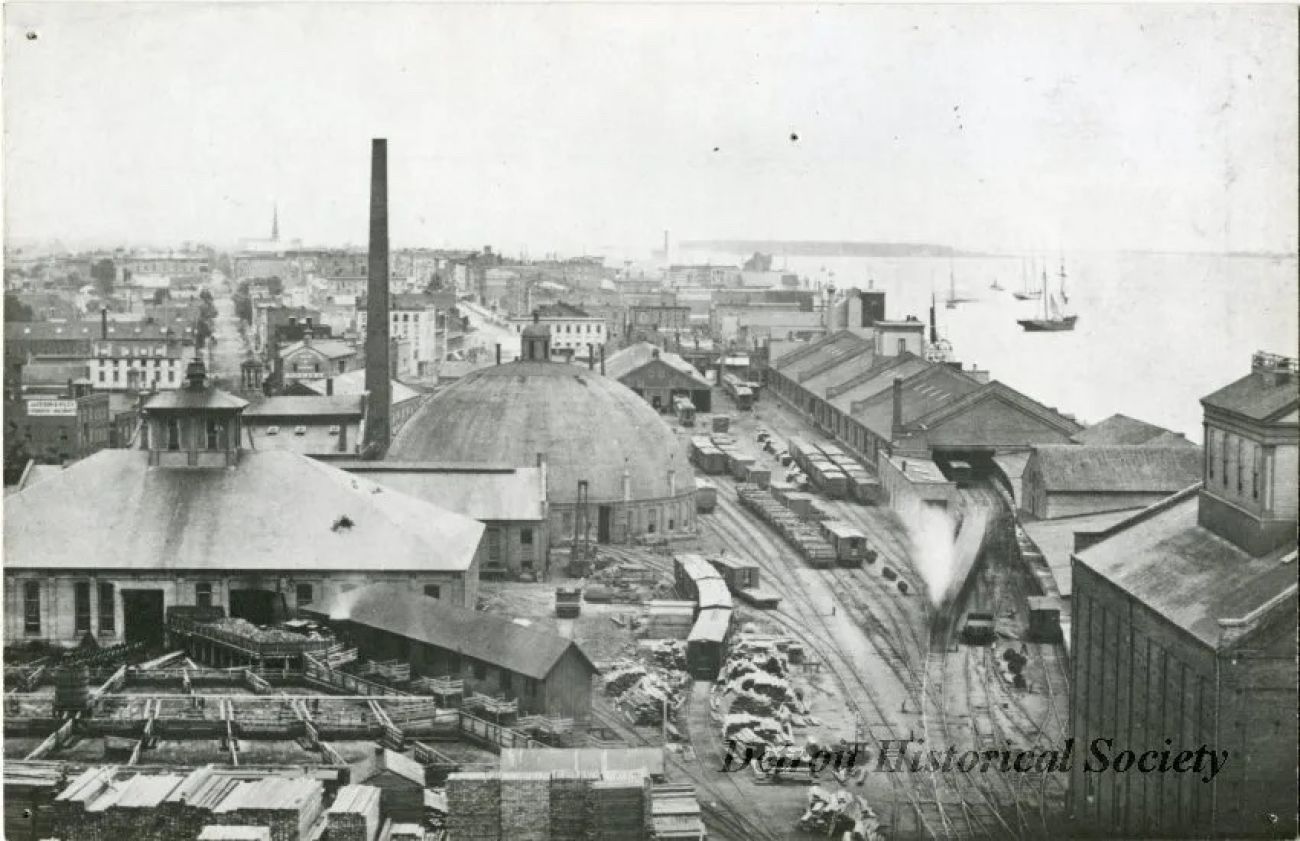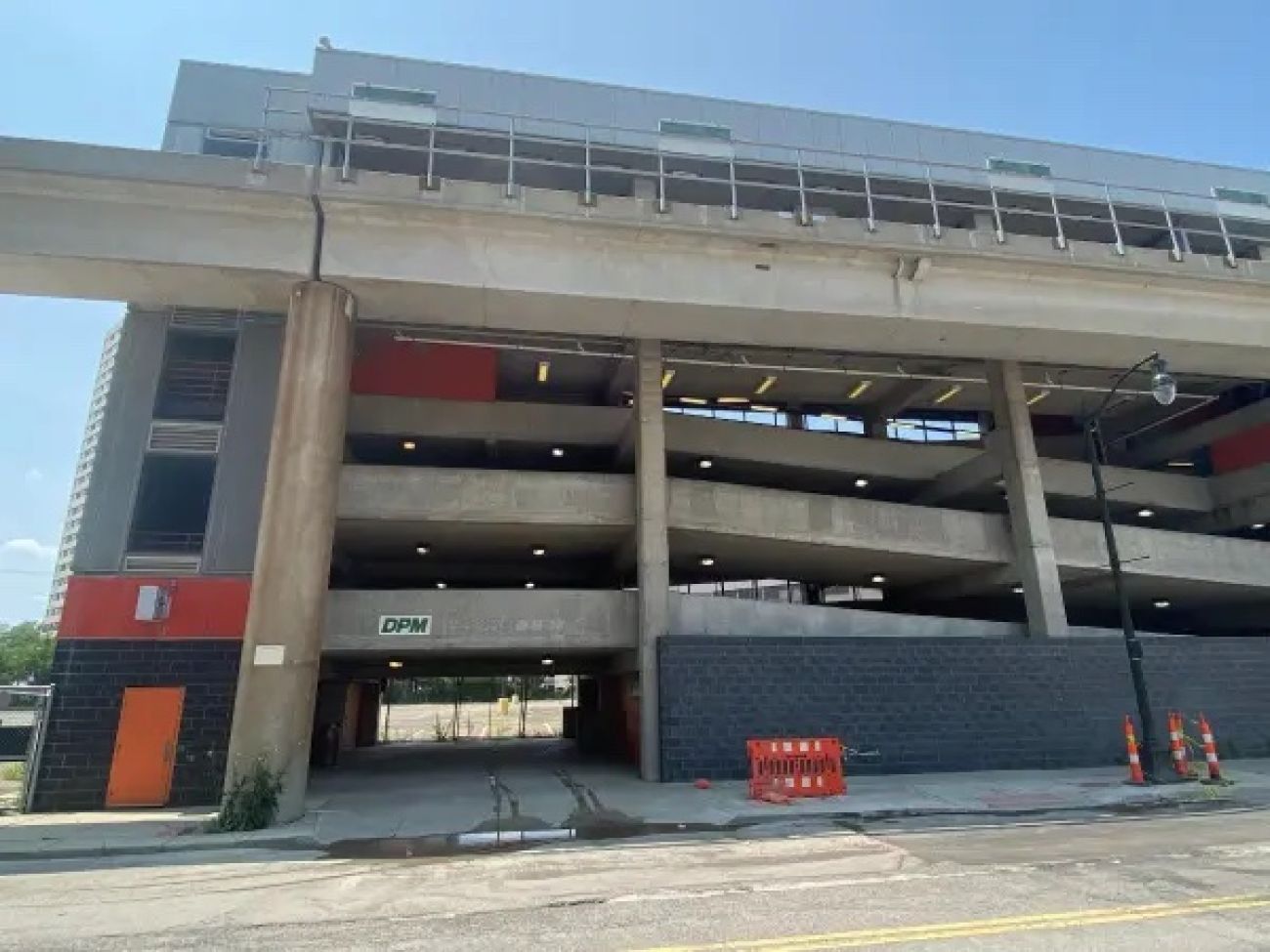Old Detroit train site on track for national Underground Railroad network

In downtown Detroit, 501 Third Avenue is known today as Steve Yzerman Drive and houses a Detroit People Mover station.
But in the 1800s, the site played an important part in Detroit’s history as a major railway also serving as a stop on the Underground Railroad for slaves seeking freedom across the border into Canada.
Detroit’s City Council recently approved a resolution to move along the process of having 501 Third Avenue listed as a National Underground Railroad Network to Freedom site. That could lead to the site being part of a network of Underground Railroad routes across the country and inform others of its historical significance.
Related:
- Dozens of violations, just $2,000 in fines for Detroit hazardous waste site
- In Detroit, foul odors at Stellantis plant stoke fears of neighborhood ruin
- Detroit Audubon will change its name, citing need for a ‘more inclusive posture’
From 1848 to 1865, the Michigan Central Railroad was a hub for slaves and their descendants, according to city documents. Detroit had the code name “midnight,” with the Third Street Depot serving as a gateway to Canada due to its proximity to the riverfront.
The resolution was submitted by the Historic Designation Advisory Board (HDAB), which advises the council on historic preservation projects. The proposal will support the advisory board’s decision to submit a Network to Freedom application and as well as consent for the site to be included in the network.
Organized by the National Park Service, the Network to Freedom program preserves, documents, and promotes Underground Railroad History. Since the program’s inception in 1998, more than 700 Network to Freedom sites nationwide have been identified with the help of community members and local historians.
HDAB Director Janese Chapman said the resolution is part of the board’s continued efforts to identify sites that were part of the Underground Railroad. On Dec. 9, 2021, the board enacted an Underground Railroad local historic district for the downtown campus of Wayne County Community College. The 10-block area that surrounded the Michigan Central Railroad was a center of abolitionist activity from W. Fort Street to the Detroit River. A resolution was needed for the Michigan Central Railroad site since the city owns the land, Chapman said.
“It’s underestimated, more often than not,” she said of Detroit’s role in the Underground Railroad. “We’re trying to make sure that we, in the city of Detroit, include all of that history.”
Carolyn Carter, a historian, genealogist and HDAB board member, prepared the applications to the National Park Service for the train site and for WCCCD. She told BridgeDetroit that the city’s role in the Underground Railroad is a hidden gem.
“The Underground Railroad was an American story, not just a Black story,” Carter said. “I wanted to highlight those people who were involved in the movement–Black, white, men and women who were involved in helping freedom seekers make it to Canada. It’s important to me to tell that story because no one has told it from that perspective.”
Escaping to freedom in Detroit
First known as the Detroit and St. Joseph Railroad, the Michigan Central Railroad was chartered in 1832 and was the first railroad planned to cross the state, according to the Michigan Department of Transportation (MDOT). Four years later, railroad construction started west of Detroit, reaching Ypsilanti by 1838, Ann Arbor in 1839, and Jackson in 1841. By 1852, Michigan Central Railroad was operating its first train from Detroit to Chicago.

Those who worked at the railroad company fought against slavery, according to the HDAB. Railway owners John Murray Forbes and James Joy were actively involved in funding the legal defense for former slaves and railroad employees participated in abolitionist activities. Even churches and businesses surrounding the Third Avenue station were part of the movement. The Johnson Hotel, located east of the station on Woodbridge Street, employed freedom seekers, while members of the Fort Street Presbyterian Church also helped in funding legal defense.
Zachariah Chandler, who held a brief stint as the mayor of Detroit from 1851 to 1852 and later became a U.S. Senator, advocated for civil rights for newly freed slaves and helped raise money to support Michigan abolitionists.
City historian Jamon Jordan said while the Underground Railroad was not an actual railroad, there were times when people used trains to transport slaves to free states.
“The most famous case in this particular railroad is John Brown in March of 1859,” he said.
Earlier that year, the abolitionist became a “conductor” to 12 people who arrived in Kansas from a plantation in Missouri. Brown took the group across the Midwest, arriving in Chicago by March. While in the Windy City, Jordan said, Brown met fellow abolitionist and detective Allan Pinkerton, who arranged to have the group travel in a boxcar to Detroit.
“Now, by this time, it’s 13 (in the group) because one of them was pregnant and she had a child on the Underground Railroad,” Jordan said.
The train eventually arrived in Detroit at the station on Third Avenue and Brown hid some of the passengers at Second Baptist Church in Greektown, one of the oldest African American churches in the Midwest. Brown also met with fellow abolitionists William Webb and Frederick Douglass at Webb’s home to discuss a planned takeover of the Harpers Ferry Armory in Harpers Ferry, Virginia.
“And then he’s going to take them (the group) to Canada and he will meet again with Frederick Douglass in Chatham-Kent (in Ontario),” Jordan said. “They would meet again because John Brown was trying to convince Frederick Douglass to join his plan for Harpers Ferry.”
The town, located in what is now known as West Virginia, was the subject of a failed raid that Brown led in October 1859. Brown was later captured and killed for his rebellion against slavery.
A significant part of Detroit’s history
Now that the resolution has passed, the next step for Carter and the HDAB is waiting on the applications for the train site and the community college district to be reviewed. Carter is expecting the National Park Service to make a decision early next year.
“It’s just important for those stories to be told, especially in the cultural and political climate we’re in now where a lot of our history is being suggested to be erased,” she said.

“At least now (the Michigan Central Railroad) has been documented, it’s been identified, and we know that this area along the Detroit River…was a part of the movement from slavery to freedom,” Carter added.
Jordan said the designation might prompt people to dig more into Detroit’s history of the Underground Railroad. He believes the city’s part in the movement is not widely known.
“It’s easy to stumble upon the fact that Harriet Tubman was a conductor on the Underground Railroad because that history is in a lot of places,” he said. “But there are other parts of this history that are unknown. They’re kind of mysterious, and you have to stumble upon them.
“It takes you down a rabbit hole and you learn so much more about Detroit’s history, Underground Railroad history, African American history and the fight against slavery.”
See what new members are saying about why they donated to Bridge Michigan:
- “In order for this information to be accurate and unbiased it must be underwritten by its readers, not by special interests.” - Larry S.
- “Not many other media sources report on the topics Bridge does.” - Susan B.
- “Your journalism is outstanding and rare these days.” - Mark S.
If you want to ensure the future of nonpartisan, nonprofit Michigan journalism, please become a member today. You, too, will be asked why you donated and maybe we'll feature your quote next time!




